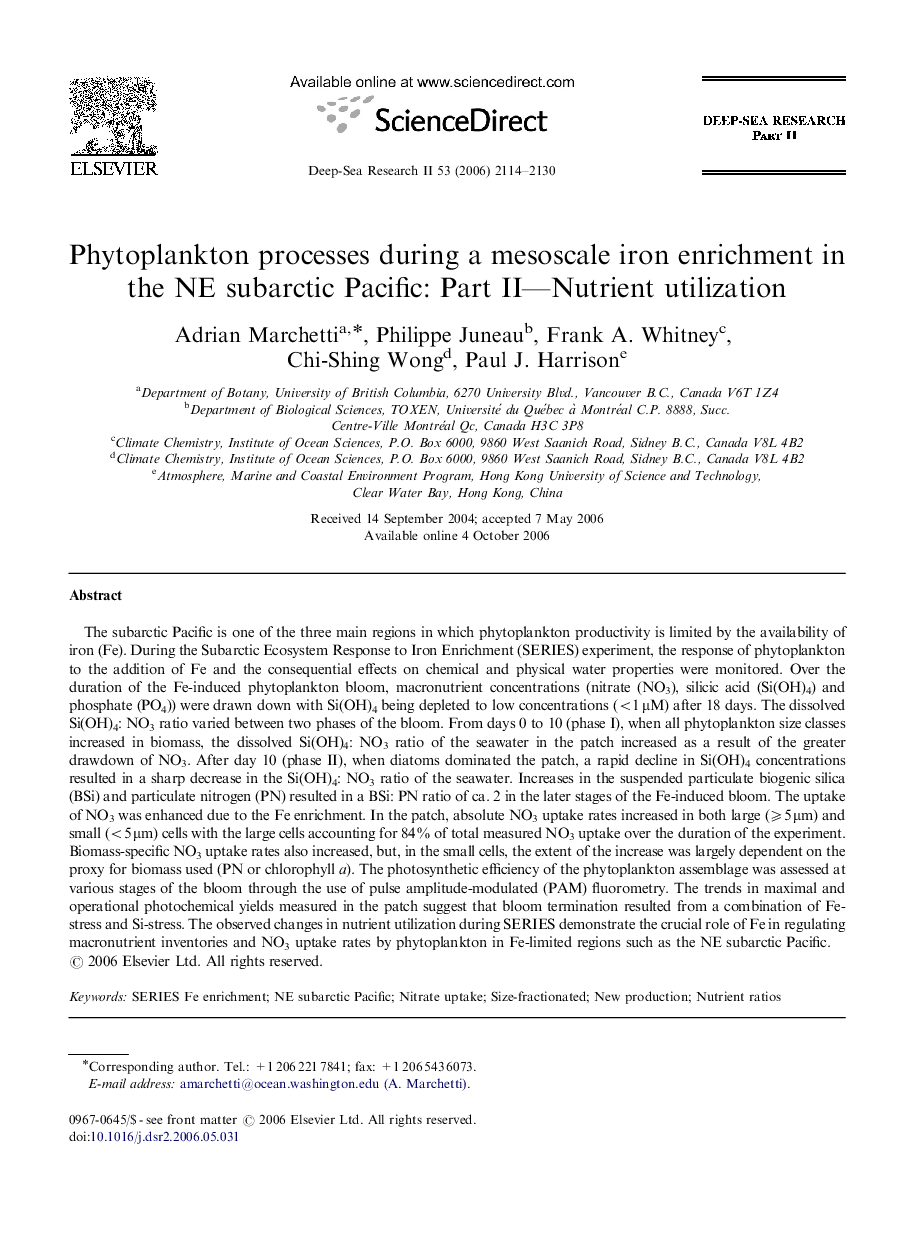| Article ID | Journal | Published Year | Pages | File Type |
|---|---|---|---|---|
| 4538350 | Deep Sea Research Part II: Topical Studies in Oceanography | 2006 | 17 Pages |
The subarctic Pacific is one of the three main regions in which phytoplankton productivity is limited by the availability of iron (Fe). During the Subarctic Ecosystem Response to Iron Enrichment (SERIES) experiment, the response of phytoplankton to the addition of Fe and the consequential effects on chemical and physical water properties were monitored. Over the duration of the Fe-induced phytoplankton bloom, macronutrient concentrations (nitrate (NO3), silicic acid (Si(OH)4) and phosphate (PO4)) were drawn down with Si(OH)4 being depleted to low concentrations (<1 μM) after 18 days. The dissolved Si(OH)4: NO3 ratio varied between two phases of the bloom. From days 0 to 10 (phase I), when all phytoplankton size classes increased in biomass, the dissolved Si(OH)4: NO3 ratio of the seawater in the patch increased as a result of the greater drawdown of NO3. After day 10 (phase II), when diatoms dominated the patch, a rapid decline in Si(OH)4 concentrations resulted in a sharp decrease in the Si(OH)4: NO3 ratio of the seawater. Increases in the suspended particulate biogenic silica (BSi) and particulate nitrogen (PN) resulted in a BSi: PN ratio of ca. 2 in the later stages of the Fe-induced bloom. The uptake of NO3 was enhanced due to the Fe enrichment. In the patch, absolute NO3 uptake rates increased in both large (⩾5 μm) and small (<5 μm) cells with the large cells accounting for 84% of total measured NO3 uptake over the duration of the experiment. Biomass-specific NO3 uptake rates also increased, but, in the small cells, the extent of the increase was largely dependent on the proxy for biomass used (PN or chlorophyll a). The photosynthetic efficiency of the phytoplankton assemblage was assessed at various stages of the bloom through the use of pulse amplitude-modulated (PAM) fluorometry. The trends in maximal and operational photochemical yields measured in the patch suggest that bloom termination resulted from a combination of Fe-stress and Si-stress. The observed changes in nutrient utilization during SERIES demonstrate the crucial role of Fe in regulating macronutrient inventories and NO3 uptake rates by phytoplankton in Fe-limited regions such as the NE subarctic Pacific.
